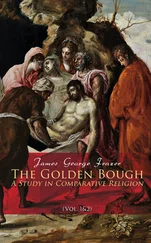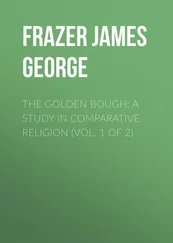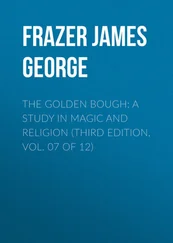X. Relics of Tree Worship in Modern Europe
Table of Contents
From the foregoing review of the beneficent qualities commonly ascribed to tree-spirits, it is easy to understand why customs like the May-tree or May-pole have prevailed so widely and figured so prominently in the popular festivals of European peasants. In spring or early summer or even on Midsummer Day, it was and still is in many parts of Europe the custom to go out to the woods, cut down a tree and bring it into the village, where it is set up amid general rejoicings; or the people cut branches in the woods, and fasten them on every house. The intention of these customs is to bring home to the village, and to each house, the blessings which the tree-spirit has in its power to bestow. Hence the custom in some places of planting a May-tree before every house, or of carrying the village May-tree from door to door, that every household may receive its share of the blessing. Out of the mass of evidence on this subject a few examples may be selected.
Sir Henry Piers, in his Description of Westmeath, writing in 1682 says: “On May-eve, every family sets up before their door a green bush, strewed over with yellow flowers, which the meadows yield plentifully. In countries where timber is plentiful, they erect tall slender trees, which stand high, and they continue almost the whole year; so as a stranger would go nigh to imagine that they were all signs of ale-sellers, and that all houses were ale-houses.” In Northamptonshire a young tree ten or twelve feet high used to be planted before each house on May Day so as to appear growing; flowers were thrown over it and strewn about the door. “Among ancient customs still retained by the Cornish, may be reckoned that of decking their doors and porches on the first of May with green boughs of sycamore and hawthorn, and of planting trees, or rather stumps of trees, before their houses.” In the north of England it was formerly the custom for young people to rise a little after midnight on the morning of the first of May, and go out with music and the blowing of horns into the woods, where they broke branches and adorned them with nosegays and crowns of flowers. This done, they returned about sunrise and fastened the flower-decked branches over the doors and windows of their houses. At Abingdon in Berkshire young people formerly went about in groups on May morning, singing a carol of which the following are two of the verses:
“ We’ve been rambling all the night, And sometime of this day; And now returning back again, We bring a garland gay. A garland gay we bring you here; And at your door we stand; It is a sprout well budded out, The work of our Lord’s hand. ”
At the towns of Saffron Walden and Debden in Essex on the first of May little girls go about in parties from door to door singing a song almost identical with the above and carrying garlands; a doll dressed in white is usually placed in the middle of each garland. Similar customs have been and indeed are still observed in various parts of England. The garlands are generally in the form of hoops intersecting each other at right angles. It appears that a hoop wreathed with rowan and marsh marigold, and bearing suspended within it two balls, is still carried on May Day by villagers in some parts of Ireland. The balls, which are sometimes covered with gold and silver paper, are said to have originally represented the sun and moon.
In some villages of the Vosges Mountains on the first Sunday of May young girls go in bands from house to house, singing a song in praise of May, in which mention is made of the “bread and meal that come in May.” If money is given them, they fasten a green bough to the door; if it is refused, they wish the family many children and no bread to feed them. In the French department of Mayenne, boys who bore the name of Maillotins used to go about from farm to farm on the first of May singing carols, for which they received money or a drink; they planted a small tree or a branch of a tree. Near Saverne in Alsace bands of people go about carrying May-trees. Amongst them is a man dressed in a white shirt with his face blackened; in front of him is carried a large May-tree, but each member of the band also carries a smaller one. One of the company bears a huge basket, in which he collects eggs, bacon, and so forth.
On the Thursday before Whitsunday the Russian villagers “go out into the woods, sing songs, weave garlands, and cut down a young birch-tree, which they dress up in woman’s clothes, or adorn with many-coloured shreds and ribbons. After that comes a feast, at the end of which they take the dressed-up birch-tree, carry it home to their village with joyful dance and song, and set it up in one of the houses, where it remains as an honoured guest till Whitsunday. On the two intervening days they pay visits to the house where their ‘guest’ is; but on the third day, Whitsunday, they take her to a stream and fling her into its waters,” throwing their garlands after her. In this Russian custom the dressing of the birch in woman’s clothes shows how clearly the tree is personified; and the throwing it into a stream is most probably a raincharm.
In some parts of Sweden on the eve of May Day lads go about carrying each a bunch of fresh birch twigs wholly or partly in leaf. With the village fiddler at their head, they make the round of the houses singing May songs; the burden of their songs is a prayer for fine weather, a plentiful harvest, and worldly and spiritual blessings. One of them carries a basket in which he collects gifts of eggs and the like. If they are well received, they stick a leafy twig in the roof over the cottage door. But in Sweden midsummer is the season when these ceremonies are chiefly observed. On the Eve of St. John (the twenty-third of June) the houses are thoroughly cleansed and garnished with green boughs and flowers. Young fir-trees are raised at the doorway and elsewhere about the homestead; and very often small umbrageous arbours are constructed in the garden. In Stockholm on this day a leaf-market is held at which thousands of May-poles ( Maj Stǎnger ), from six inches to twelve feet high, decorated with leaves, flowers, slips of coloured paper, gilt egg-shells strung on reeds, and so on, are exposed for sale. Bonfires are lit on the hills, and the people dance round them and jump over them. But the chief event of the day is setting up the May-pole. This consists of a straight and tall sprucepine tree, stripped of its branches. “At times hoops and at others pieces of wood, placed crosswise, are attached to it at intervals; whilst at others it is provided with bows, representing, so to say, a man with his arms akimbo. From top to bottom not only the ‘Maj Stăng’ (May-pole) itself, but the hoops, bows, etc., are ornamented with leaves, flowers, slips of various cloth, gilt egg-shells, etc.; and on the top of it is a large vane, or it may be a flag.” The raising of the May-pole, the decoration of which is done by the village maidens, is an affair of much ceremony; the people flock to it from all quarters, and dance round it in a great ring. Midsummer customs of the same sort used to be observed in some parts of Germany. Thus in the towns of the Upper Harz Mountains tall fir-trees, with the bark peeled off their lower trunks, were set up in open places and decked with flowers and eggs, which were painted yellow and red. Round these trees the young folk danced by day and the old folk in the evening. In some parts of Bohemia also a May-pole or midsummer-tree is erected on St. John’s Eve. The lads fetch a tall fir or pine from the wood and set it up on a height, where the girls deck it with nosegays, garlands, and red ribbons. It is afterwards burned.
Читать дальше












